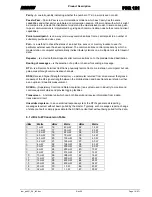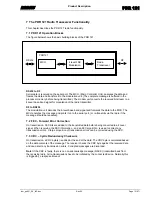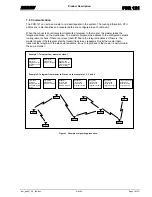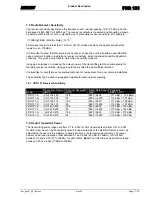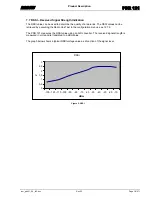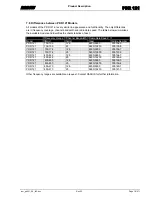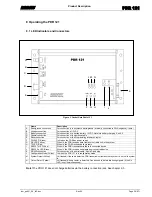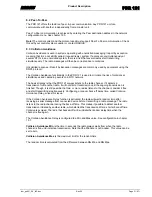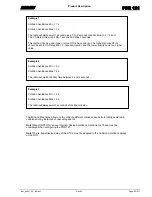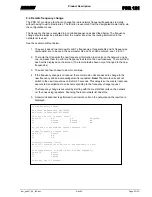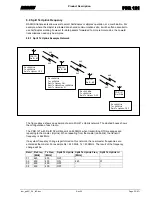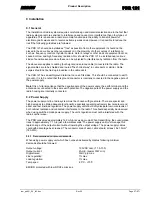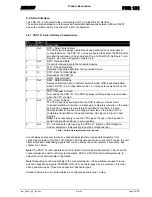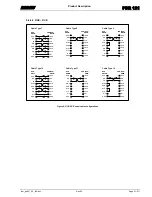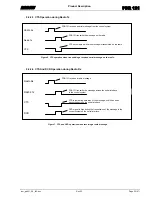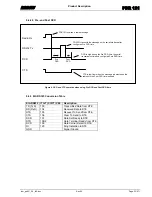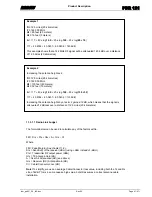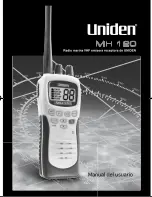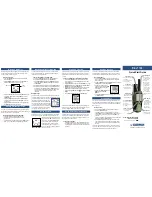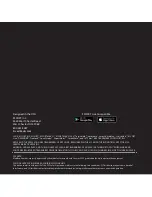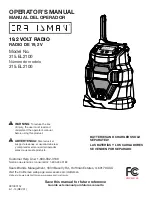
RADIUS
Product
Description
PDR 121
iom_pdr121_04_r02.doc
Rev 02
Page 27 (67)
9 Installation
9.1 General
The installation of radio systems requires careful design and material selection due to the fact that
radio systems are more sensitive to interference and cause more interference than other types of
apparatus. This is because a radio’s two main functions are the ability to transmit powerful
electromagnetic waves and to receive extremely weak ones. However it is possible to reduce the
risk if the following guidelines are followed:
The PDR 121
should be installed as "free" as possible from other equipment. It should not be
placed in the same box as other equipment or in the proximity of other sources of interference,
such as: frequency controls, thyristor controls, motors, relays or other kinds of equipment that can
cause both low and high frequency radiation. Nor should
the PDR 121
be installed near various
kinds of sensitive sensors since these can be subjected to interference by radiation from the radio.
The above also applies to cabling (both signal and antenna cable) connected to the radio. The
signal cables are to be shielded and routed "the shortest way" in cable ducts or similar. Cable
surplus should not be tied up in bundles in the cable ducts.
The
PDR 121
has an earth/ground terminal on one of its sides. This should be connected to earth
(ground). It is to be noted that this ground connector is internally connected to the negative pole of
the power supply.
Note!
It is of vital importance that the negative pole of the power supply, the earth terminal and the
antenna are connected to the same earth potential. The negative pole of the power supply and the
radio housing are internally connected.
9.2 Power Supply
The power supply unit in a radio system must be chosen with great care. There are special and
high demands to obtain adequate functionality, especially regarding extremely low noise level and
exact and fast line/load regulation. The power supply unit should only dissipate low noise levels of
both cabinet radiation and conducted interference to the radio. This should especially be observed
when using switched mode power supply. The unit’s regulation must not be interfered with the
radio’s carrier wave.
The PDR consumes approximately 165 mA in receiving mode. When transmitting, the consumption
rises to approximately 1.1 A in just a few milliseconds. The power supply unit must manage this
rapid change of the output current without lowering the output voltage. The power supply cables
could with advantage be screened. The conductor area of each cable should, at least, be 1.5mm
2
(18 AWG).
9.2.1 Recommended minimum demands:
When using power supply unit which has not been delivered by Radius following minimum
demands should be followed:
Output voltage:
12.5VDC nom. (11.5-13.5)
Output current:
2A min. (power 30W min)
Ripple/noise:
30mV p-p max.
Line regulation:
1% max.
Load regulation:
1% max.
Temp spec:
-30°C - +70°C
EMI/RFI protected with low RF/HF emissions.


